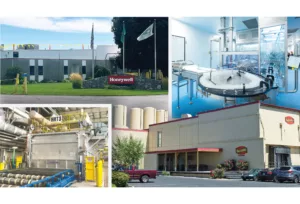Spokane's economic health ranks high in prosperity
Even so, metro area has room for improvement among regional competitors

Patrick Jones is the executive director of the Institute for Public Policy and Economics Analysis, at Eastern Washington University.
As a multiyear graduate student in Madison, Wisconsin, I came to love that city’s vibe—with its huge research university, state capital, beautiful lakes, and an abundance of 20-somethings who don’t leave after getting their degree. I’ve always thought that Spokane would do well to adopt some of that city’s ways.
But looking at recent scoring of large metro areas by prosperity measures from the Brookings Institute, Madison, Wisconsin might learn a thing or two from Spokane.
Every year, Brookings publishes a Metro Monitor covering 54 very large metros, of at least 1 million residents; 56 large metros, of 500,000-1 million residents; and 85 midsized metros, of 250,000-500,000 residents. The latest version was released in March.
The Monitor adopts five categories, with three measures in each. The categories are economic growth, prosperity, inclusion, racial inclusion, and geographic inclusion. The first three categories include typical measures of economic success; the latter two examine gaps between people of color and non-Hispanic whites, as well as gaps among neighborhoods. Significantly, the scoring is done based on percentage change over the most recent decade, not levels. In other words, the Monitor emphasizes relative change.
Brookings ranks each metro area for each of the 15 measures within their size grouping. It also produces quintile ranking, by size, for each of the five categories.
The Spokane-Spokane Valley Metropolitan Statistical Area now consists of Spokane and Stevens counties. It falls into the large segment, along with Madison and several other western U.S. metros that are part of the competitive set to Spokane’s business recruitment efforts.
And where does Spokane fall in the most recent version of the Monitor? Quite well: In the top two quintiles for all five categories. Spokane scores highest in the prosperity category, ranking 10th among all large metros. Its three component measures include percentage changes over the decade in labor productivity, average annual wage, and standard of living.
Madison, Wisconsin? Only one of its categories scores relatively high, with a second quintile finish.
But before we engage in a bout of self-congratulation, consider how some of Spokane’s neighboring metro areas fared in the Monitor. The closest geographically, Boise, Idaho, ranked second or fifth in the three classic economic prosperity categories. Reno, Nevada, came in eighth or 12th in those categories, Provo-Orem, Utah, was first among all 56 large metro areas for two of the categories and third for the third category. Colorado Springs, Colorado, secured a first quintile and a second quintile ranking as well. The outlier was Albuquerque, New Mexico. Its highest category ranking was one second quintile among the three economic prosperity categories.
It’s clear that Spokane finds itself in challenging competition from most of these western metros. Yet, in the two equity categories, racial and spatial gaps, our community generally has outperformed these competitors. Its racial inclusion category score of 25 is the highest among the six large western metros. And its geographic inclusion category score of 21 ranks third among the same metros. The Spokane MSA would have ranked higher in the racial inclusion category, had the measure of relative poverty rates between non-Hispanic whites and people of color not been so low, scoring 45 out of 56.
Similarly, Spokane would have placed higher than 20th in the economic inclusion category if it hadn’t received a near-bottom score of 50 for the growth in median earnings.
Spokane has been a low-wage economy for many years, and the past decade wasn’t much different. For 2023, Census reports median earnings of $45,700 in the Spokane MSA. This places it considerably behind Colorado Springs, Boise, Ogden, and Reno.
Altogether, these rankings show our community faring well nationally, but not so well regionally. If we want to improve our relative standing, the areas for improvement are quite clear. Can local businesses pay higher wages? That depends on several factors, such as the presence of nationally competitive firms, productivity, and in general the mix of sectors here. Similarly, improving the gap of poverty rates among racial and ethnic groups depends on a few factors, such as the employment of people of color in higher-paying sectors.
Lifting these laggard measures won’t happen overnight, so the 2026 Metro Monitor is unlikely to show much change. But perhaps the outlook in 2030 will reveal that the metro area has successfully addressed the areas of concern, and its rankings will land in the first quintile.
Hooptown USA could then add another accolade—one of the most vital economies in the nation. But I’ll still welcome some of Madison's vibe.
Patrick Jones is the executive director of the Institute for Public Policy and Economics Analysis, at Eastern Washington University.

_c.webp?t=1763626051)

_web.webp?t=1764835652)
